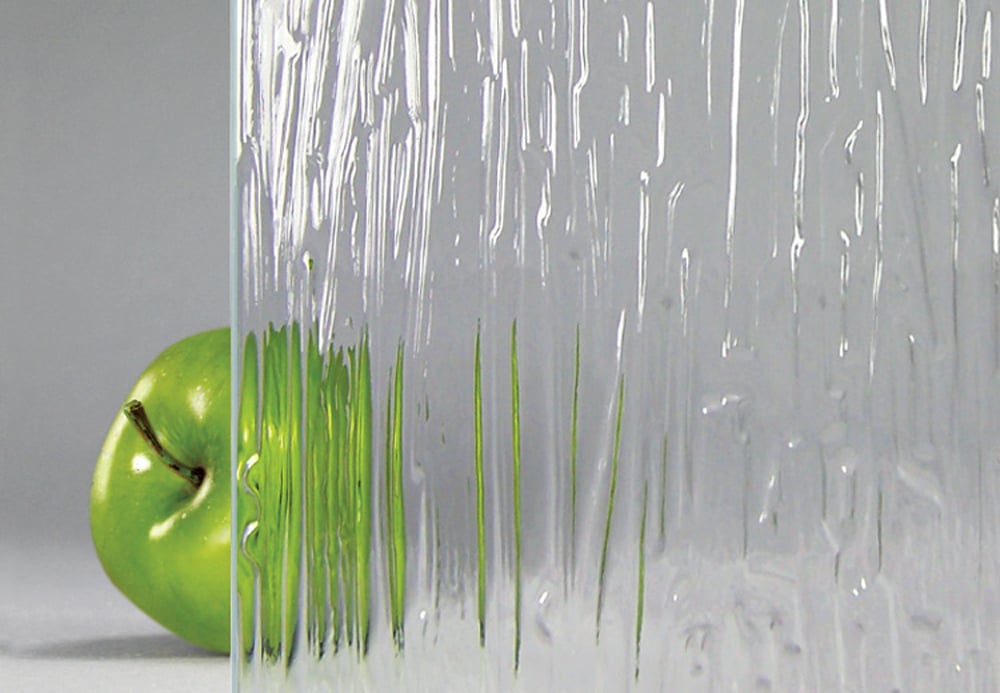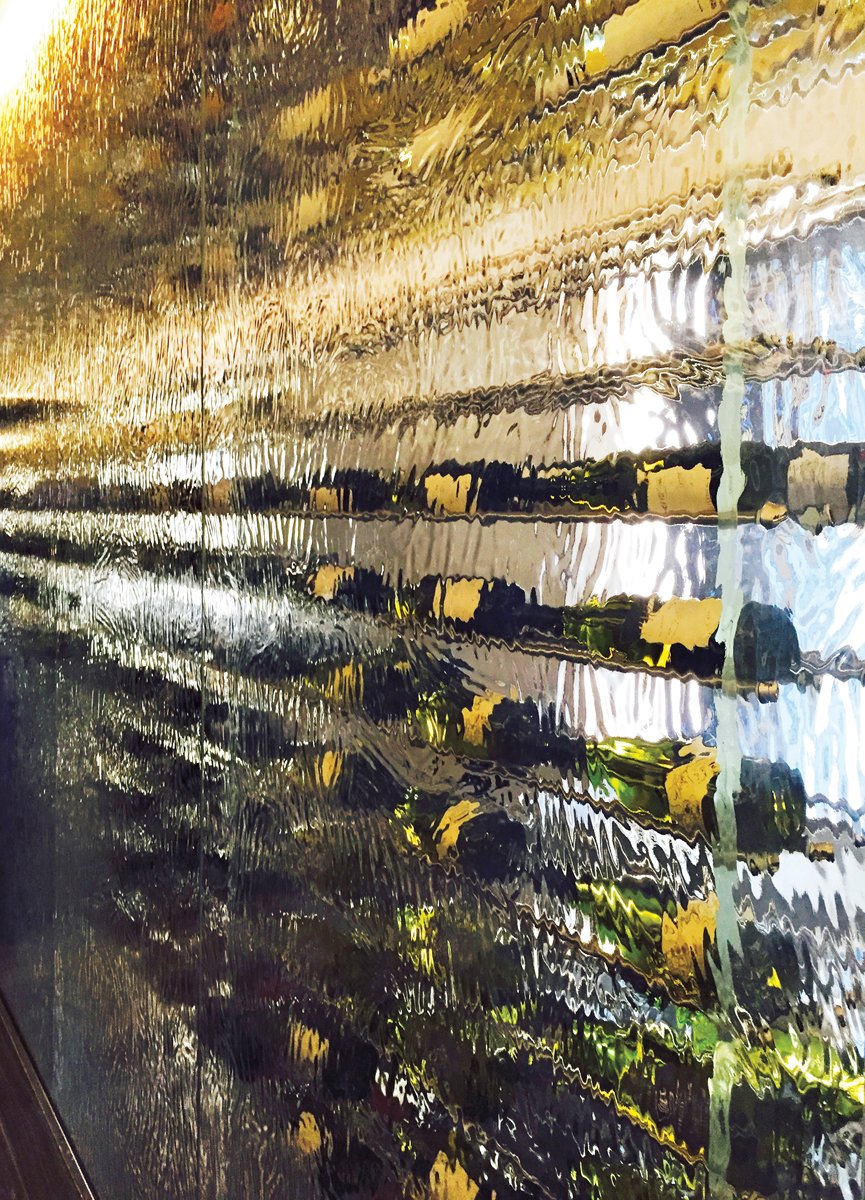
June 30, 2021
Recycled Glass Products Are Slowly Going Mainstream
Although glass is a perfect candidate for the circular economy, single-stream recycling and perceptions of recycled content remain significant challenges.

Glass can be a frustrating material. For all its unique qualities—elegance, durability, inertness, and unparalleled transmission of light—it challenges us with its weight, fragility, severe consequences when mishandled, and large carbon footprint. Suppliers such as Schott, Corning, and Nippon Electric Glass are addressing these limitations by pushing the boundaries of strength, scratch resistance, thinness, and flexibility using aluminosilicate glass, hardened using potassium chemical strengthening. Applications are currently focused on consumer electronics and screens, but architectural options exist—laser technology is now allowing us to bend and shape large-format sheets in more complex ways.
RECYCLING
We know that glass can be infinitely recycled with no loss in performance and doing so reduces its carbon footprint considerably, but the material remains pitifully low on the list of most recycled materials. And even when it is placed in the recycling bin or gets carted away from the job site for reclamation, almost all of it ends up as filler for roads, glass wool insulation, aggregates, or abrasives—stuff that cannot be recycled again.
In Europe alone, proper recycling of all building-glass waste could prevent 925,000 tons going to landfills, save 1.23 million tons of primary raw materials, and reduce carbon emissions by more than 230,000 tons every year. Add to that the fact that many locations globally are running out of suitable sand deposits to mine, and recycling becomes even more imperative.

RECYCLED CONTENT
The problem with using recycled content lies in glass’s greatest benefit—its transparency. The slightest impurity results in changed melting points and thus loss of clarity or uniformity.
Glazing manufacturers could use much higher amounts of recycled content in their products (the highest at present is approximately 40 percent) if glass were sorted well. We need multistream rather than single-stream recycling at curbside; bottle bills that encourage consumers to bring back empties at a rate of 98 percent; higher taxes for landfilling; and incentives to create glass recycling centers that can sort, clean, and process the material with better precision and cleanliness.
However, there are great products that use postconsumer recycled content, including IceStone countertops, Bendheim’s EcoGlass recycled architectural glass, and Architectural Materials’ Tactile recycled glass. But these are still classed as “eco” and separated from the “standard” range of products, which is a challenge—we need to take recycling mainstream.
You may also enjoy “Materiality in a Post-COVID-19 World”
Would you like to comment on this article? Send your thoughts to: [email protected]
Register here for Metropolis’s Think Tank Thursdays and hear what leading firms across North America are thinking and working on today.





